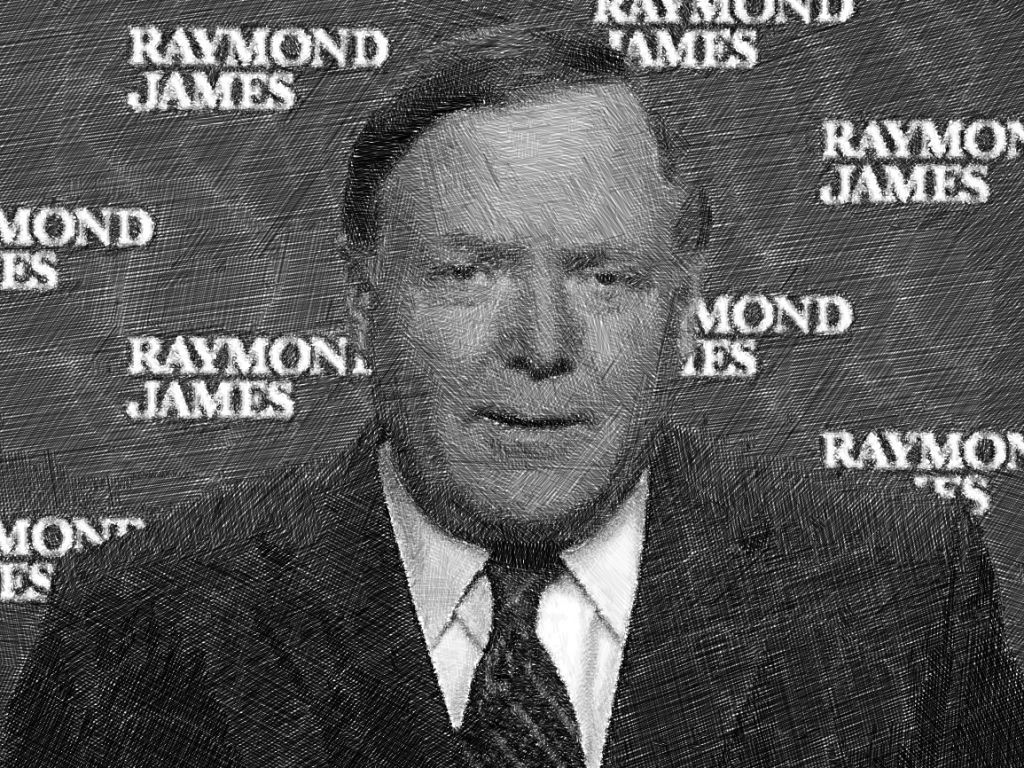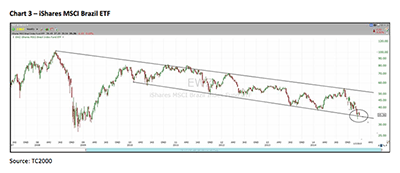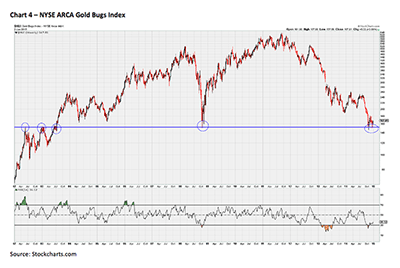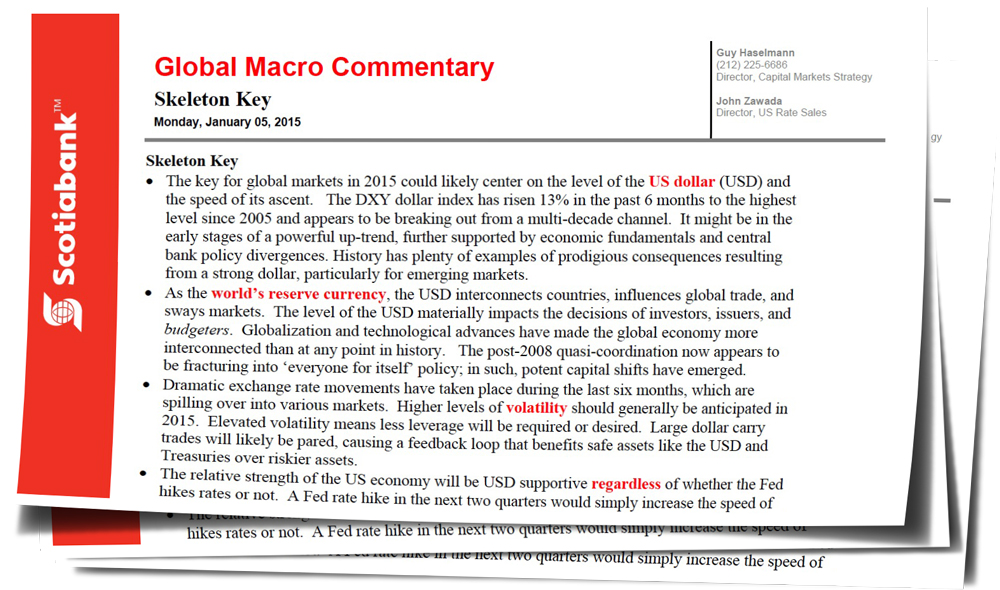All about that base
January 5, 2015
by Jeffrey Saut, Chief Investment Strategist, Raymond James
The transition from one year to the next is always accompanied by a whole host of traditions intended to help people celebrate this annual new beginning. The resolutions, parades, fireworks, football games, food, furniture sales – they all seem to be experienced in a fresh, optimistic light, like an all-forgiving reset button was hit when that ball dropped on New Year’s Eve. Our lives sort of return to clean slates, ready to accept whatever may come our way in the next 12 months. The same is true for the investment industry, as trading mistakes and misanalysis have now been memorialized in history as tax losses, and can represent experience instead of a drag on performance to the well-positioned mind. It can be a fresh start if you let it be, and right there to guide you is the most ubiquitous of Wall Street’s New Year traditions – the flood of annual outlooks from market gurus.
Indeed, you are likely to see many links on the financial websites this week screaming for your eyes’ attention with flashy headlines like “Top Analyst Gives 2015 Predictions” or “The New Year’s Best Stocks.” Readers eat these articles up, and for good reason – they’re fun and some even turn out to make a great deal of sense. Tapping into our collective desire to believe that the markets can truly be figured out by someone, these reports are like reading the investment equivalent of a person’s horoscope. Deep down we know we’re possibly just getting a bunch of dart throws organized into a pretty statement of “fact,” but there is often enough eventual truth prophesied in the words to keep us coming back for more every year. Yet a lot of money can definitely be made by being on the right side of those predictions that actually do turn out to be true. Like always, the correct way to play any ideas you come across in these annual outlooks is to follow the time-honored “tradition” of successful trading – cut your losses quickly and let your gains run.
Thus, I stay away from the crystal ball when formulating my stance going into a new year and instead look to the charts to try to discover areas of the financial markets that are being overlooked or neglected by investors. I want to see boring, sideways charts where volume is drying up and the only articles I come across on the underlying instrument are about how poorly it has done. Being a believer in the cyclical nature of the markets, these are situations I look to add to my radar for the coming year, but I would not go so far as to call them predictions. They are more like watchlist entries, and I will then follow them each day to search for a favorable entry point to begin building a position. For me, when it comes to creating an annual outlook, it’s all about that base.
Just as strong buildings require a steady foundation, a strong trend typically needs a base from which to rise. As they say, “the longer the base, the higher the space.” While volatility over the past few years has resulted in more V-shaped recoveries, I still believe a prolonged sideways consolidation holds tremendous power and can act as a platform to prop up prices. Going into last year, the Shanghai Composite Index most intrigued me due to the multi-year pattern it was forming. Early 2014 did not provide a great entry point, but China remained on my watchlist and because of that I noticed in late July that it finally appeared to be breaking out, and the resultant trend remains in effect even today. So while I may not find something for 2015 that performs like the Shanghai Index, I at least know that if I cut any losses short and let my gains run, I should be ok.
So now onto the fun part – a few areas of interest for you to follow over the coming year:
Small-Cap Stocks
As you probably know if you follow our comments, 2014 was a tough year for smaller companies, with institutional money seeming to mostly flow into the mega-caps that dominate the major indexes. The Russell 2000 closed at 1208.65 on March 4 and did not have a single daily close higher than that until just a few days ago on December 26, a long period of underperformance. While the S&P 500 and NASDAQ Composite both ended the year with double-digit price gains, the Russell could not even make it above 5%, which is important to note since, going back to 1980, the small-cap index has ended a year with less than 5% gains 13 times and the average return over the following year has been 18.01% (source: Thomson Reuters). That’s obviously no guarantee, but the shorter-term chart for the Russell looks favorable as well, with the index breaking out from the cup-with-handle pattern we have recently mentioned in these comments (see Chart 1 on page 3). The cup-with-handle is a great example of the kind of base that I look for and will hopefully provide a demand floor for any weakness over the coming weeks. And finally, it appears we could already be getting a switch from large caps back into small caps, as the relative strength ratio between the two classes has bounced off of a long-term trendline and is breaking out to the upside from oversold levels (Chart 2; a rising ratio indicates small-cap outperformance).
Brazil
It seems that Brazil has been considered the next great place to invest several times over the last 15 years, but, alas, the iShares MSCI Brazil Index Fund (EWZ/$35.36) currently sits near multi-year lows and about 65% below the 2008 high. So why would this time be any different? Well, once again, I have to go back to the charts and point out that EWZ is at the lower end of a channel that has contained prices over the last five years (Chart 3) and may provide a favorable risk-to-reward ratio at these levels. On top of this pattern, Brazil will be hosting the 2016 Summer Olympics in a little over a year and a half, and many investors may be hoping for a similar stock market run-up to the one China experienced in the couple of years prior to the 2008 games in Beijing. Brazil doesn’t yet have much of a base to build on, but if we get some sideways action near the lower end of this channel, I will start to get very interested.
Gold Miners
Gold and anything tied to it has pretty much been a falling knife over the past three years and any traders looking to go long have likely done so at their own peril. However, there may finally be some signs of life in the AMEX Gold BUGS Index (HUI/167.81) that tracks the performance of gold-mining companies, with the last two months of trading forming what looks to be a fairly decent base between the 150-180 range. This isn’t the first time the 150 level has proven to be important either, as it has come into play as strong support or resistance four other times since 2002 (Chart 4). The combination of the base right above key support could result in a powerful reversal in trend and should be watched closely over the next few months.
And with that, I’ll bring the focus back to the short-term with The Call for This Week: Wall Street should be returning en masse from the holidays with a fresh outlook and moves needing to be made. 2014 proved to be extremely trying for many underperforming portfolio managers who will now try to right the ship and beat their benchmarks. This will be their first full-week to position themselves accordingly, so I will be watching the volume readings closely to see if I can sense an early pattern developing that can provide some clues as to how we will begin the year. The uptrend in stocks remains in effect, and we will just have to see if that continues now that we’re back to full volume.


















